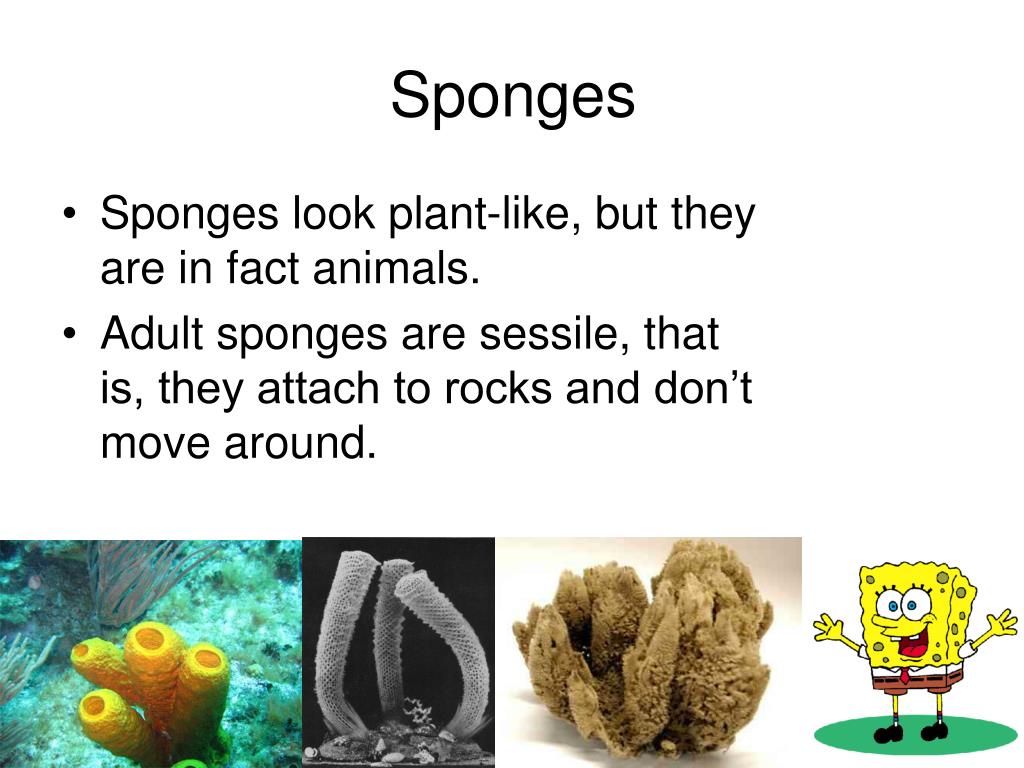

The Phylum Cnidaria contains about 9,000 species of hydras, jellyfishes, sea anemones, sea fans, sea pens, corals, etc. Sponges provide homes, however, for many organisms, particularly those anchored to coral reefs.

In terms of their ecology, few animals appear to eat sponges, probably because a mouth full of spongin and spicules is not too appetizing! However, a few reef fish and the hawksbill turtle feed exclusively on sponges. Although most species are marine, a few are found in freshwater. While sponges lack any real organs or true tissues, they do contain different types of cells including: epithelial-like cells called pinacocytes that cover the exterior and non-flagellated interior surfaces, flagellated cells called choanocytes that line inner chambers and canals, and amoeboid cells called archeocytes that move about in the mesohyl and can differentiate into other types of cells that form parts of the skeleton (composed of collagen and/or spongin fibers often embedded with calcareous or siliceous crystalline spicules). Although multicellular, sponges have a very simple grade of organization, and the body consists of a loose aggregation of cells embedded in a gelatinous matrix. The Phylum Porifera ("pore bearers") contains approximately 5,000 species of animals called sponges.


 0 kommentar(er)
0 kommentar(er)
